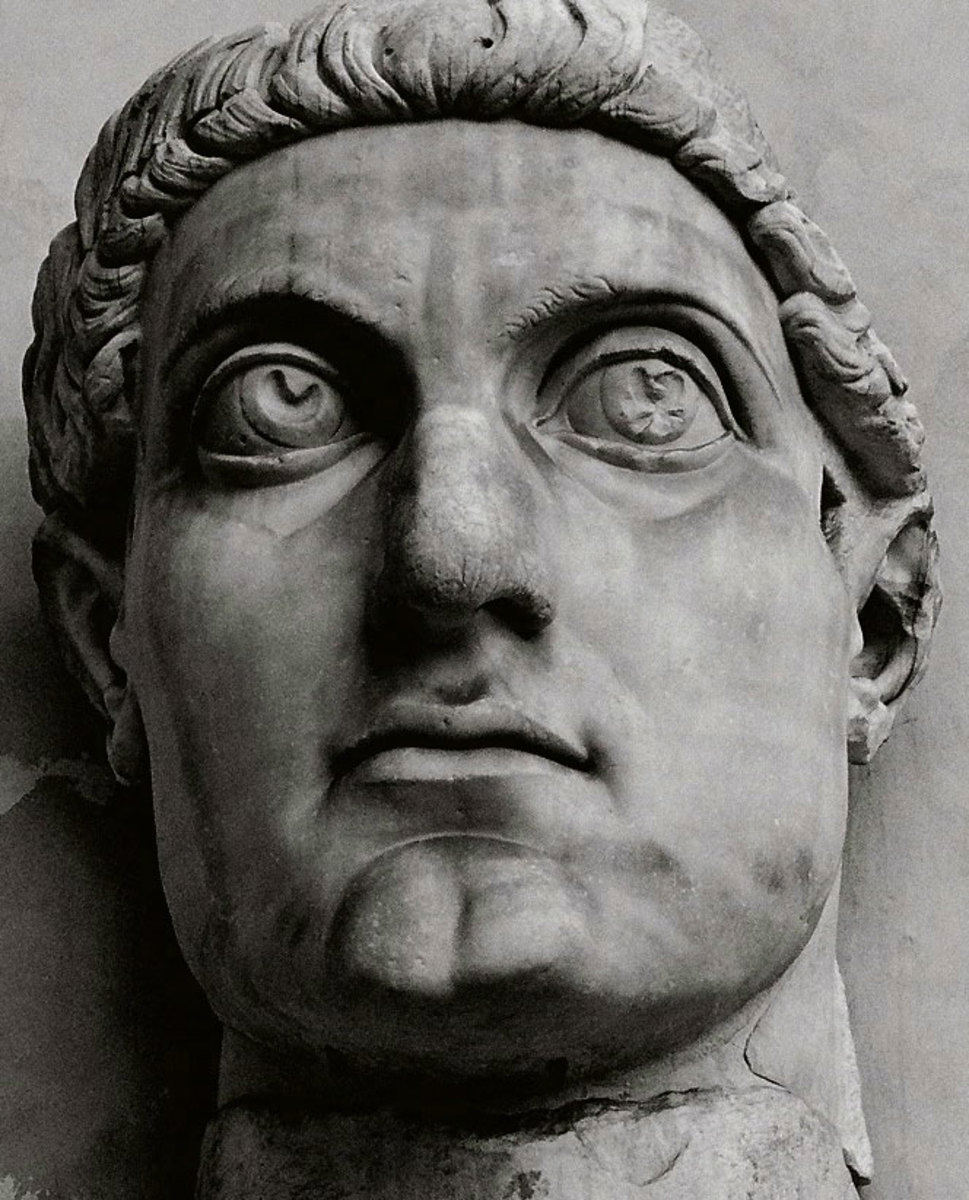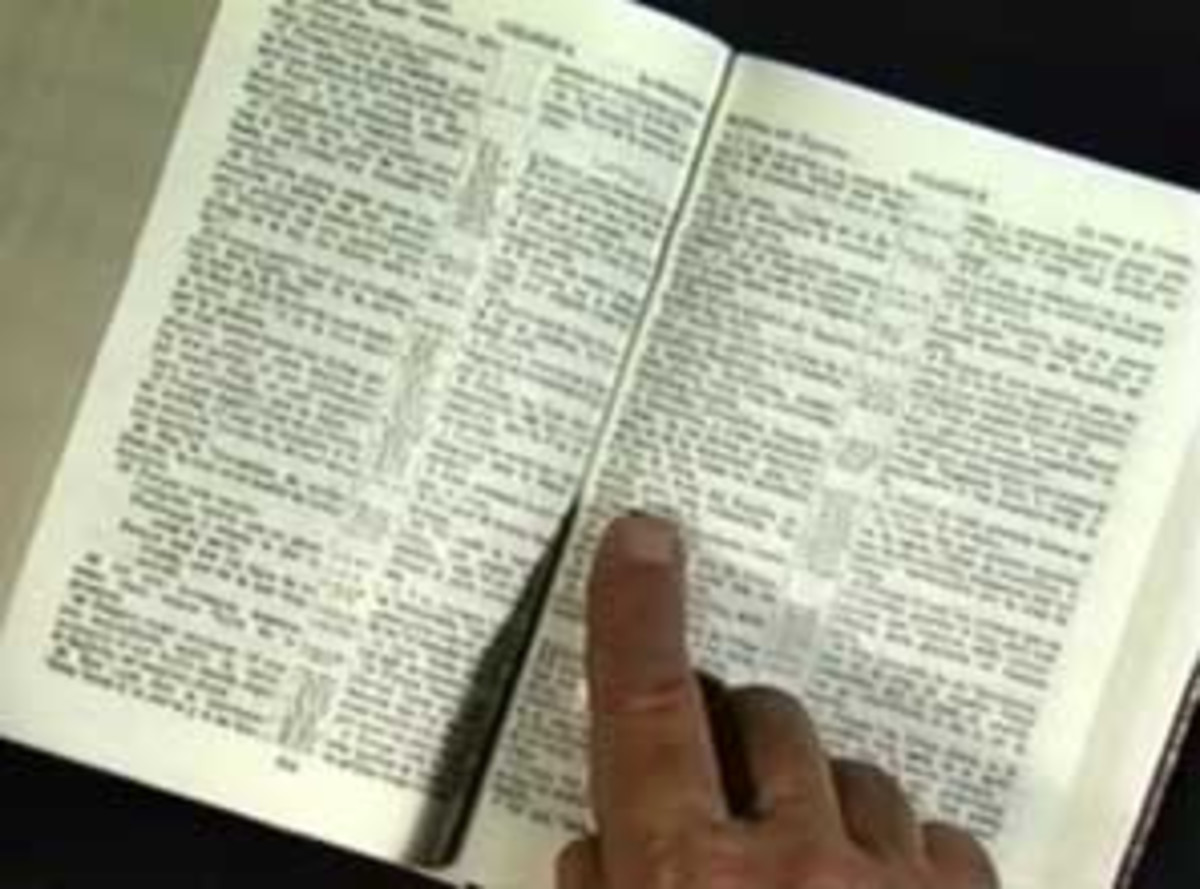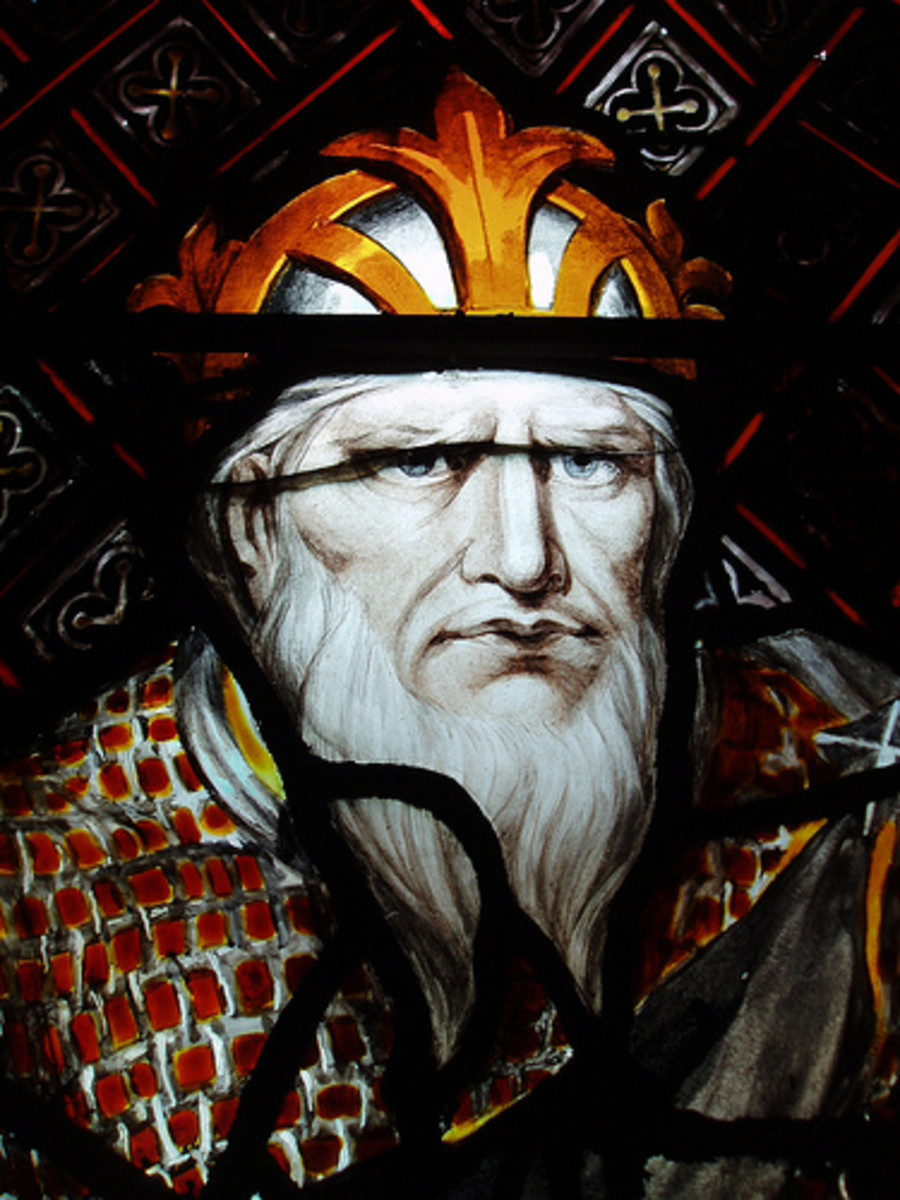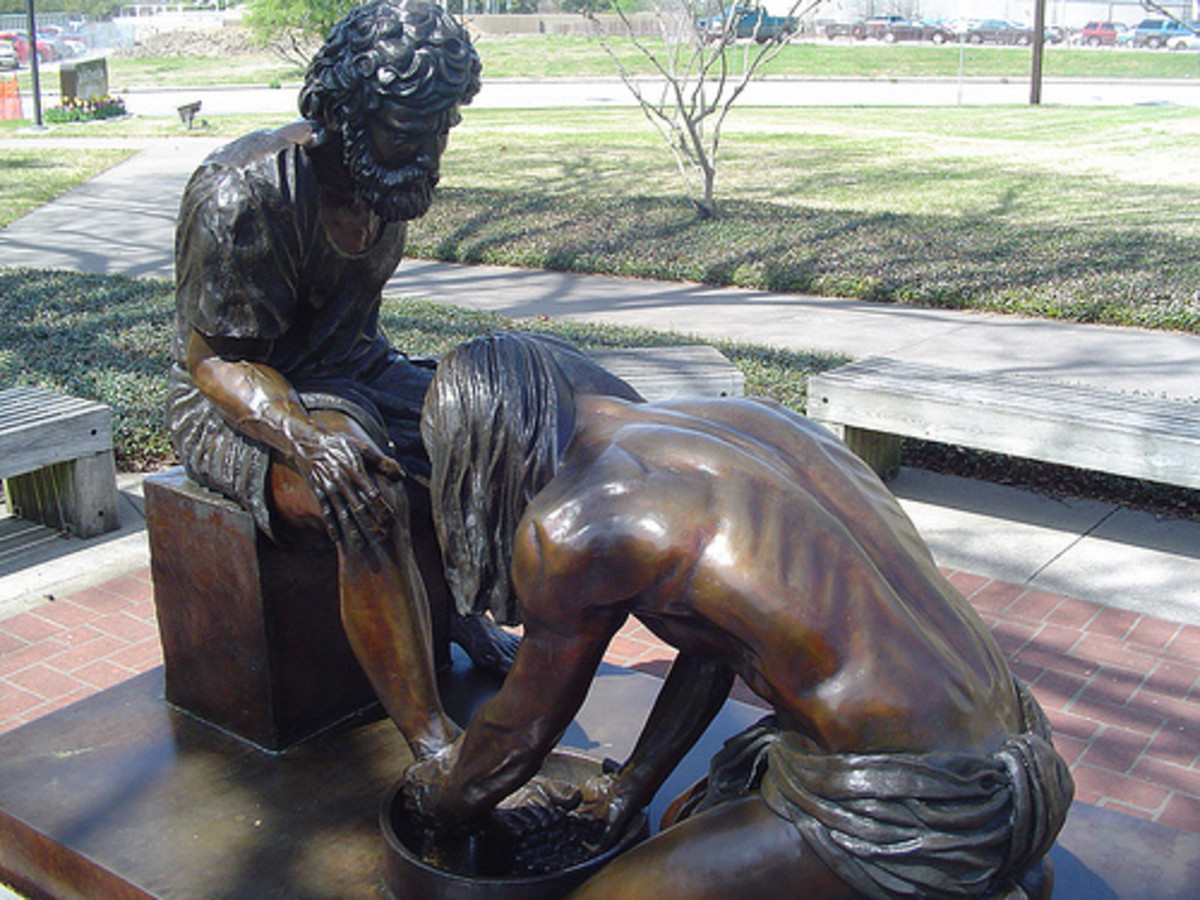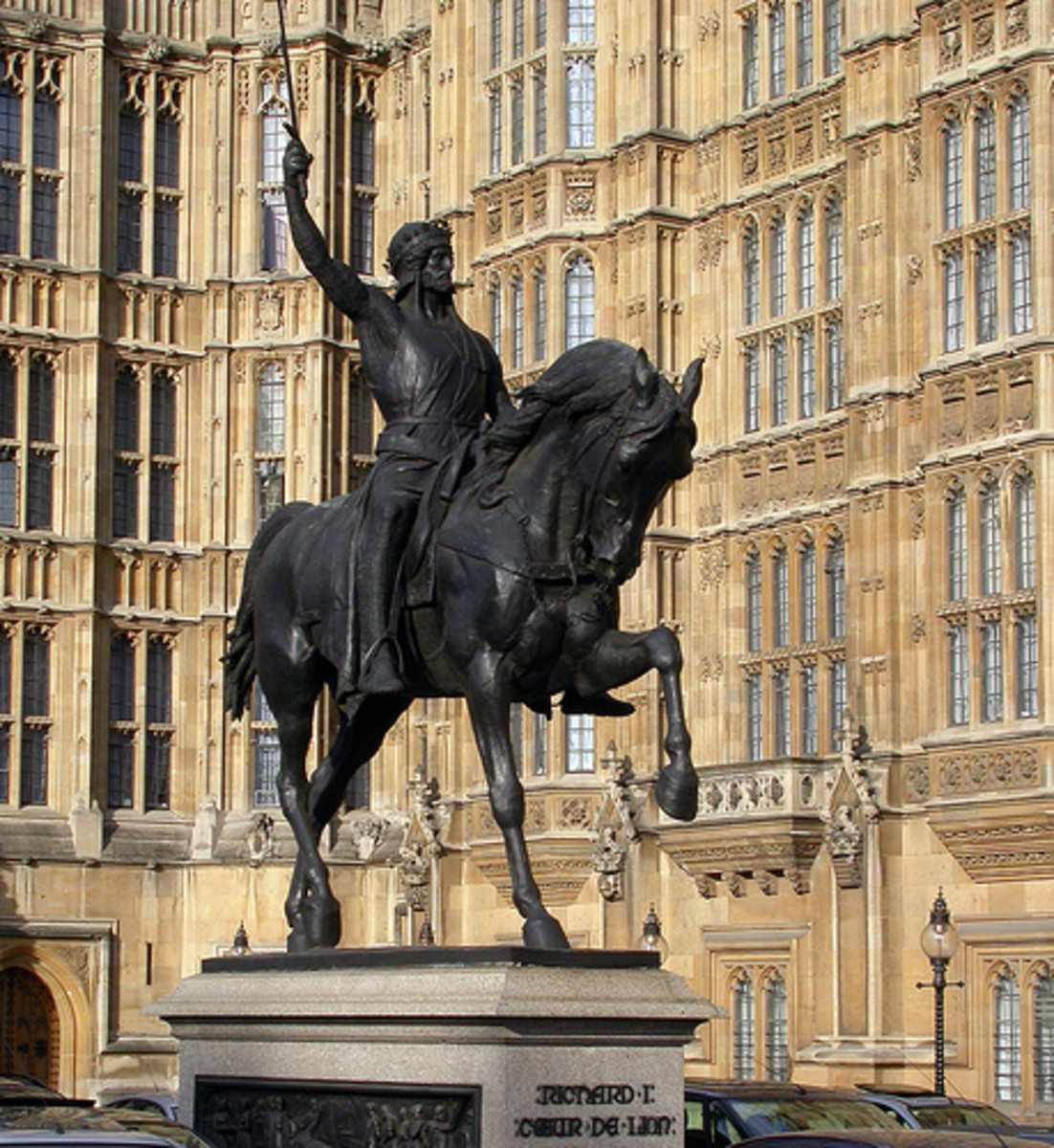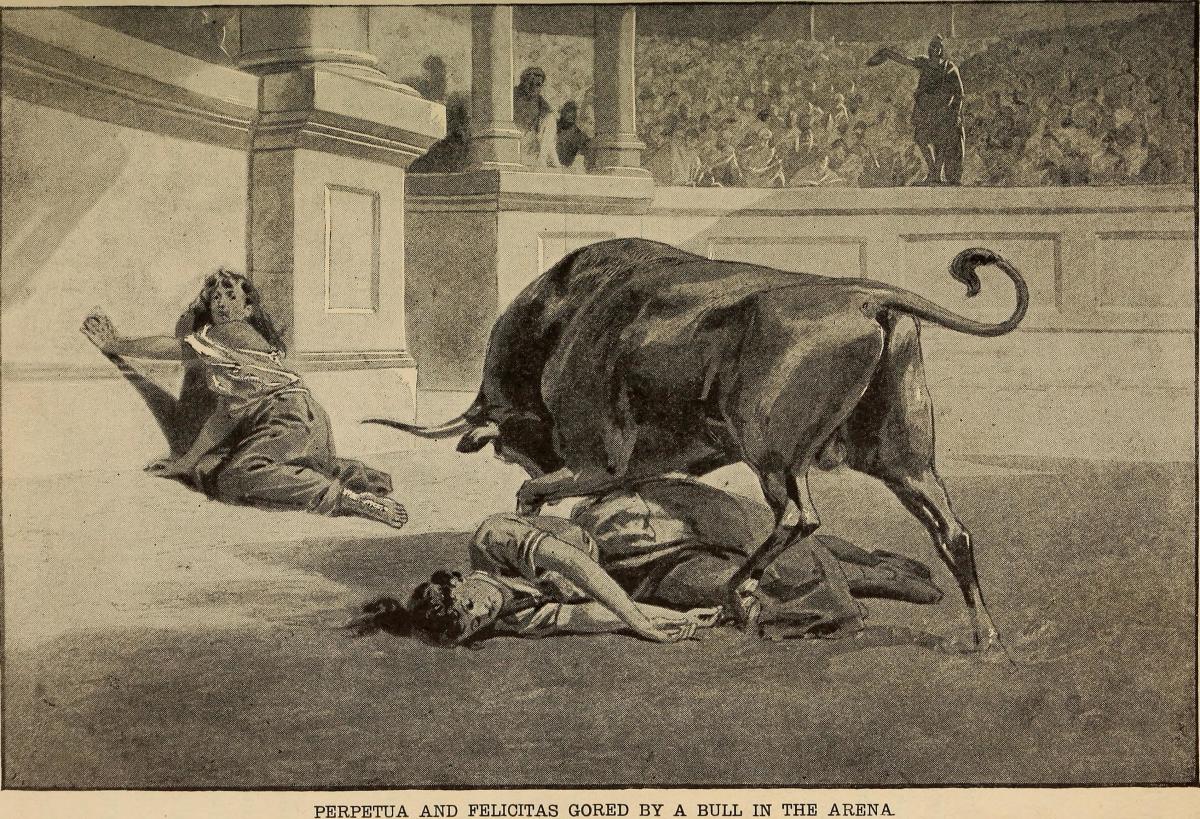Why CHRISTMAS in the FALL Season? -OR- a Mixed-Up Calendar System & How the History of Christianity was Confused
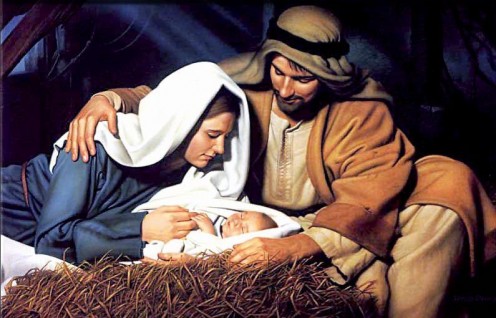
Origin of the Traditional Observances by the Christian Church
The birth of the historical person Jesus, is sacredly held by the Christian faith as the momentous occasion that "changed the world". It set the calendar that we currently use today as being separately defined between the "Old World" of ancient antiquity and the "New World" of the "Age of the Church" with our present modern era. It should be also noted that in recent times, there have been secular changes from the original "Christian" references to our modern calendar. That would be in the difference from the original recording of these dates, as in "B.C" ("before Christ") to the current "BCE" ("before Common Era"), and likewise with "A.D." ("Anno Domini" - Medieval Latin, translated as "in the year of the Lord") to the current "CE" (simply put as the "Common Era"). This of course, is yet another device by the proponents against Christianity to undermine the truth and origin of our faith, but that is yet another topic which we will not go into further detail here (not for now, at least).
Both of these methods employ a system of accounting for the years, with "AD" (counting years after the beginning of this epoch in history), and "BC" (denoting the years before it started), with of course their "benchmark" being the birth of Jesus Christ. There is no year "zero" in this system, so the year AD 1, immediately follows the year 1 BC. This dating system was devised in 525 AD (mostly through the influence of the Christian church) and was implemented as a method to consolidate the various other systems for counting the years that were being used by the different European countries of the time. This would later become the 'Gregorian calendar' (i.e. the "Western calendar"), and was named for Pope Gregory XIII, who officially signed it into a decree on the 24th of February in 1582. Otherwise this calendar system was not as widely used throughout all of Europe until after 800 AD, but then spread as the standard to most other parts of the world. It is now the most widely used calendar in the world today, with the secular changes in reference that we have noted above.
--------------------------------------------------------------------------------------------------------------
A Shift of the Era
As mentioned, the physical dating system changed to the present calendar based on the traditional church's observance of the birthdate or conception of Jesus Christ. It should be noted however, how these things actually came about in relation to the history of the Christian church and the date of these observances that the calendar was based upon.
Timeline of Significant Events in the History of the Early Christian Church
- Transitional Year (no year "0") - the 'annunciation' and/or proposed time for the birthdate for Jesus Christ.
- 1st Century - The "Great Commission" (Matthew 28:18-20; Mark 16:15) is begun as the disciples of Christ, the Apostles and the early "Jewish-Christians", start spreading the gospel throughout the gentile nations, most of which were protectorates under the expansive government of the Roman Empire at the time.
- 50 A.D. - The 'Council of Jerusalem' (or 'Apostolic Conference') is a name applied by historians to an early Christian council that was held in Jerusalem. It has not been established to have been the very first council of the new Christian community's leaders, but it is the first one of which Biblical records exists (Galatians 2, Acts 15, and in the writings of the Church Fathers). This council however, was one of the most significant steps towards the unification of the early Christian church and the establishment of important doctrinal issues, as to how the church laws would apply to the newly converted Gentiles without creating a "double standard". *SEE our article: "The APOSTLES of CHRIST - The Apostolic Conference and The Jerusalem Council".
- 54-68 A.D. - The early "Christian movement" begins suffering great persecution under the hands of both Jews (from whose religion Christianity arose), and the Roman Empire which controlled much of the land early Christianity was distributed across. Peaks in this period of persecution included the reigns of several Roman Emperors, such as Nero (Nero Claudius Caesar Augustus Germanicus), with the execution of the Apostles Peter (64 A.D.) and Paul (67 A.D.), and under Septimius Severus (around 200 A.D.). Christian persecution continued during waves of political change in the Roman Empire, from the 1st century until the early 4th century, when the religion was finally legalized by Constantine I.
- 70 A.D. - Although King Herod the Great's descendants through Herod Agrippa II, remained client kings of neighboring territories until about 96 A.D., Roman rulership over Jerusalem and the Judaea region, began to be challenged with the 'First Jewish–Roman War', which resulted in the destruction of the Second Temple and the removal of Jerusalem as the capital of Judaea. *This event was prophesied by Jesus (Matthew 24:2; Mark 13:2).
- 132-135 A.D. - Jerusalem was once again established as the capital of Judaea during the 'Bar Kokhba' revolt. The Romans succeeded in suppressing the revolt after three years of conflict, whereafter Emperor Hadrian combined 'Iudaea' with its neighboring provinces to create 'Syria Palaestina'. He renamed Jerusalem to 'Aelia Capitolina', erasing the name of Judea and Romanizing the city. Hadrian then banned all Jews from entering the city under the threat of death, except for one day each year. These anti-Jewish measures which also affected the "Jewish-Christians", were taken to ensure "the complete and permanent secularization of Jerusalem". The enforcement of the ban on Jews entering the capital continued until around the 4th century CE.
-
200 A.D. - Clement of Alexandria (Titus Flavius Clemens, c. 150-215 AD), a Christian theologian and head of the noted Catechetical School of Alexandria. He united Greek philosophical traditions with Christian doctrine, and later wrote that a group of Christians in Egypt ("Copts" i.e. modern 'Coptic' Christians) were celebrating the "nativity" of Jesus (the "gathering" to celebrate the birth), on the date of Pashons the 25th (corresponding to our May 20th).
- 221 A.D. - December the 25th is first identified by default - as a possibility for the birthdate of Christ, in 'Chronographiai', "a history of the world from Creation to the present year" (at the date of its writing), by the historian Sextus Julius Africanus (born 180 A.D. in Jerusalem), which spanned (according to his computations) a period of 5723 years. He placed the "Incarnation of Jesus" (or 'Immaculate Conception') on the first day of AM 5501 (our modern March 25, 1 B.C.) at the spring equinox (possibly to correspond with 'Passover'), but otherwise for reasons that are not disclosed in his writings. This of course would indicate timing for a December birth (nine months later), which thus became the more commonly accepted date. His written works were also quoted by Eusebius (Bishop of Caesarea in 314 A.D.), a Roman historian and scholar of Biblical canon, as well as influencing many of the writings of Christian history among the founding fathers of the early church.
- 249-258 A.D. - Cyprian, the Bishop of Carthage, notes in some of his writings about the connection with observing the rebirth of the sun, to the birth of Jesus Christ. He states that, "O, how wonderfully acted Providence that on that day on which that Sun was born... Christ should be born". This commonality of practice was slowly becoming established throughout the Roman Empire at this time.
-
274 A.D. - Under the reign of the Roman Emperor Aurelian (270-265 A.D.), the official cult of 'Sol Invictus' ("Invincible Sun"), is established alongside the traditional Roman deities. Honoring the December 25th date for "Christmas" along with the pagan observance of the winter solstice (which also honored the Roman sun-god) becomes more widely observed on the Roman imperial calendar as a standard being practiced jointly together.
- 321 A.D. - Constantine "the Great", dubbed as the first "Christian Roman Emperor" (although not converting to Christianity until the age of 40 and still remaining an observer of pagan practices) legalizes Christianity across the Roman Empire and decrees that, "Christians and non-Christians alike should be united in observing the 'venerable day of the sun'", otherwise known as "Dies Natalis Solis Invicti" or "the birthday of the unconquered sun".
- 325 A.D. - Constantine summons the 'Council of Nicaea', the first ecumenical council of the organized Christian church. Therein important doctrinal issues were decided, such as which books to include in the official uniform copy of the Holy Bible, the decision against celebrating the Lord's Supper on the day before the Jewish Passover, and consideration for which holy days should be observed (such as Christmas and Easter) and more specifically WHEN to observe them.
- 386 A.D. - John Chrysostom, Archbishop of Constantinople, is recorded as commenting in a sermon about the similarities between the "venerable day of the sun" and the date observed for the Christian Christmas, and that these practices were still being observed. By then, the December 25th date had been firmly established on the Julian calendar of the Romans however, as the date of Christ's birthday and the date for its observance by the Christian church.
- 395 A.D. - Division occurs in the Roman Empire after the death of Emperor Theodosius I (c. 379–395). This date also became very important as to the division of the Christian church between east and west, along with their separate religious practices. Thus, the date of December 25th for the traditional observance of Christmas became more of a convention of the western empire and the Holy Roman Church. The Eastern Orthodox Christian Church however, began observing the 6th of January as the designated time to observe Christmas instead and was more in connection with the eastern church's Epiphany celebration ("vision of God" - the revelation of "God the Son" and the visitation of the Magi to the Baby Jesus).
TO NOTE: This was because it was calculated that the older Julian calendar still being used by the Romans, was actually out of alignment by as much as a dozen days. This created the shift of dates resulting in a change for the designated time to observe Christmas by Eastern Christianity. This newer and more accurate dating system was a forerunner to the current modern calendar used today and was the predecessor to the 'Gregorian Calendar' later implemented by the Western Church. However it should also be noted, that when the Western Church converted to this improved dating system, they did not include correcting the date for the church's observance of the Christmas religious holiday on December 25.
- 787 A.D. - The 'Second Council of Nicaea' is regarded as the Seventh Ecumenical Council by Roman Catholics, Eastern Orthodox, Eastern Catholic Churches and various other Western Christian groups. Important decisions of notice were: that intercommunion with the other churches should be re-established and that the restoration of honoring religious icons (or "holy images"), which had been suppressed by imperial edict within the Byzantine Empire as iconoclastic heresy and idolatry, should be reinstituted and also include images of Jesus Christ, the Virgin Mary, the holy angels, as well as veneration of the saints, along with other pious and holy men, as embodied in the manufacture of prominent displays, statues, sacred vessels, tapestries, vestments, etc., for use in the church and the homes of Christians.
As we can see from history, there is actually more of a variety within the Christian church as to when the sacred occasion of Christmas should actually be observed, along with many other customs and practices. Regardless of the reasoning behind the selection of these dates, we should be conscious to focus on what it is in celebration of, more so than why a specific date may have been chosen versus another. Thus keeping Christ in "Christmas", instead of the more secular observance that it has become today. The historical facts should still otherwise be considered, especially where traditions and religious customs are concerned, as to "how" we celebrate this glorious time in relation to "why" we actually observe it.
--------------------------------------------------------------------------------------------------------------
SEE our other article on this topic:
“In Retrospect: ...of CHRIST-MASS, Christmas Trees, and the Holiday's Traditions“
for more of the historical facts on the origins and customs of the early church.
--------------------------------------------------------------------------------------------
Unwrapping Christmas - Exposing the Lies Surrounding the Birth of the Lord Jesus Christ
--------------------------------------------------------------------------------------------
When was Jesus the Messiah (the 'Christ' or the "Anointed One”) Really Born?
Although Christmas is a well-established Christian tradition, biblical scholars have long suggested that December the 25th is not the true date of Christ’s birth. This is not only because of the more obvious reasons we have listed above, but also that more detailed and accurate information has been difficult to confirm over the centuries of time that have since passed. Therefore many alternatives have surfaced over the years depending on the way we view the evidence that is presented.
The best way to better understand the Christian faith and possibly determine the most accurate date for the birth of Jesus, is to look at the entire picture through history, especially in relationship to the Jewish people from which the religion evolved. Everything that originally pertained to Jesus Christ (Yeshua the Messiah) was designed to relate to the Hebrew people. Jesus was considered to be a Hebrew prophet, a Jewish Rabbi, an expert scholar well versed in the "Word of God", or the Hebrew TaNaKh, the Holy Scriptures of His people. As a result, we can learn a great deal from the Hebrew perspective, as such would have been how things were viewed by the people of His time. As far as determining the actual date for the birth of Jesus, a similar approach will provide important clues.
First, the Winter season in Israel is generally too cold at night to be out shepherding your flocks, as the time of Yeshua ben Nazarene’s birth (Jesus of Nazareth) is depicted in the Holy Scripture (Luke 2:8). The shepherds were in the fields keeping watch over their sheep at night, when the angel appeared to them announcing the birth of the Messiah (Luke 2:9-14).
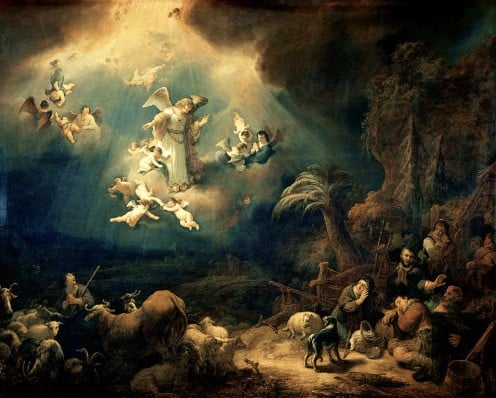
Although the arid climate may have been sunny and warm during the day, it becomes freezing cold when the sun goes down during the winter in Israel. Therefore we can initially rule out the traditional Christian date in December at the onset of the colder parts of the winter months. Some scholars have even noted that the sheep were typically brought under cover from November to March, thus eliminating the latter months of the fall season as well. Winter in Israel is also not the logical time to take a census, and yet at the time Christ’s birth, Joseph and Miriam (Mary), had gone to Beit Lechem (Bethlehem) to register for the census conducted by the Romans (Luke 2:1-5).
Jesus was born into a completely Jewish or Hebraic culture, where the date of one’s death was remembered and observed rather than the date of one’s birth.
"The end of a thing is better than its beginning; The patient in spirit is better than the proud in spirit." (Ecclesiastes 7:8 NKJ)
This would help explain why we are more certain of the time of year for Christ's death (in the Spring at the 'Passover Feast'), but not as clear on the time of the year or the date of His birth.
--------------------------------------------------------------------------------------------------------------
Why All the Resistance?
We may also wonder why the Christian church has for so long resisted the notion of another possible date for the birth of Jesus Christ. They are obviously aware of the historical facts and other information that we are portraying in this article.
The Catholic Encyclopedia even states, "Christmas was not among the earliest festivals of the Church. Irenaeus and Tertullian [early Church fathers] do not show it on their list of feasts."
As noted in the timeline above, by the fifth century it was the common practice that the birth of Jesus would be forever observed on the date(s) established in the Winter month(s), even though the date in December is especially noted as the time of the old Roman feast for the birth of Sol (the sun), one of the many names for the pagan sun-god.
These same origins can be traced back to Semiramis, the Queen of Babylon, (also called 'Ishtar' or the "Queen of Heaven") who contaminated the Israelites’ worship of God with Baal worship (Jeremiah 7:18, 44:17). Her original husband Cush(a grandson of Noah) had died, whereafter she then married her first son Nimrod (mentioned in Genesis 10:8-10), which after his death, was claimed to have ascended to become the sun-god Baal. She then ordered the Babylonians to celebrate the birth of her next son Tammuz, who she claimed to have been immaculately conceived by Baal-Nimrod. Within this "family triad", Tammuz is deemed as the "Messiah" of Babylon. Scholars now refer to them as the "Unholy Trinity of Babylon". Semiramis had also set December the 25th as the date for observing Baal-Nimrod’s birth on the advice of her astrologers, since it marked the sun at its farthest point from the earth during the period of the winter solstice. *SEE our article: "WHY NOT - Easter Bunnies, Ribbon Bonnets and Baskets full of Colorful Eggs?".
"The children gather wood, the fathers kindle the fire, and the women knead dough, to make cakes for the queen of heaven; and they pour out drink offerings to other gods, that they may provoke Me to anger." (Jeremiah 7:18 NKJ)
Next there is Mithraism, a large and popular "mystery religion" that involved a sun worship cult, which fostered the observance of December 25th as a holiday throughout the Roman and Greek worlds. This winter festival was called "the nativity" and "the Nativity of the sun". Worshippers of Mithras had a complex system of seven grades of initiation, with ritual meals and other practices, such as "secret handshakes" and "hidden" meeting locations (coincidentally quite similar to the practices of Free Masonry).
Over time, the sun-god came to be worshipped all over the ancient world on the dates ranging between December 21-25. The 'Festival of Saturnalia' for example (the Roman god presiding over agriculture and the harvest time), was a week-long time of orgies, drunkenness, and even human sacrifices to a host of various pagan deities, including worship of the sun-god 'Sol Invictus' (popularized by Emperor Aurelian), that was also centered around these same dates. Because this feast was so prominent among the pagan population of ancient Greece and Rome, the date was simply adopted as a time for the birth of Jesus by the Roman Christian church, as we have also documented in the timeline above. A mosaic can even be found in the Vatican grottoes under Saint Peter's Basilica, on the ceiling of the tomb for the Julii (Pope Julius I), which depicts the "Messiah Jesus" riding in his chariot, as the Greek sun-god 'Helios' or the Roman 'Sol Invictus'. It is dated to the 3rd century A.D.
Much later we then start to find, where according to David Kertzer in his book, 'The Popes Against the Jews: The Vatican’s Role in the Rise of Modern Anti-Semitism', throughout the 18th and 19th centuries CE, Jewish rabbis of the ghetto in Rome were forced to wear clownish outfits and march through the city streets to the jeers of the crowd, being pelted by a variety of objects as part of the 'Saturnalia' carnival (p.74). In 1836, the Jewish community of Rome even sent a petition to Pope Gregory XVI, pleading with him to stop the annual Saturnalia abuse of the Jewish community, to which the Pope responded, "It is not opportune to make any innovation". Also on December the 25th in 1881, riots were prompted which broke out across Poland, when Christian leaders incited the masses into an anti-Semitic frenzy. On that Christmas Day, twelve Jews were brutally murdered in Warsaw, several others injured, and many Jewish women raped. In addition to the personal violence, two million rubles of Jewish property was destroyed.
This shows that a trend towards pagan customs and anti-Semitism within the Christian religious community, could be largely responsible for discouraging a re-connection with our Hebrew roots. Likewise and for similar reasons, this has probably kept the evidence found in the Holy Scriptures more well contained. It has actually hindered the advance of education and research into the historical Hebrew records by many Christians, which would otherwise shed more light onto the actual birthdate of Jesus Christ. Where in fact, these origins are undeniably our true roots. Yet many practicing Christians do not embrace this common heritage and many Orthodox Jews still deny the fact of Jesus Christ's divinity and His status as THEIR "Messiah" as well. In spite of ourselves and our differences, we are still ALL one people as the Lord's children of His creation. This fact will never change and is eternal as is the One who created us.
The Holy Scripture does tell us that many of these truths would not become entirely evident until the "latter days", and that our knowledge at this time, would then become multiplied.
"But you, Daniel, shut up the words, and seal the book until the time of the end; many shall run to and fro, and knowledge shall increase." (Daniel 12:4 NKJ)
Take a moment to look outside at the events of our modern world. Then embrace the knowledge that has otherwise been "sealed up", waiting until this time to be fully revealed to us all.
--------------------------------------------------------------------------------------------------------------
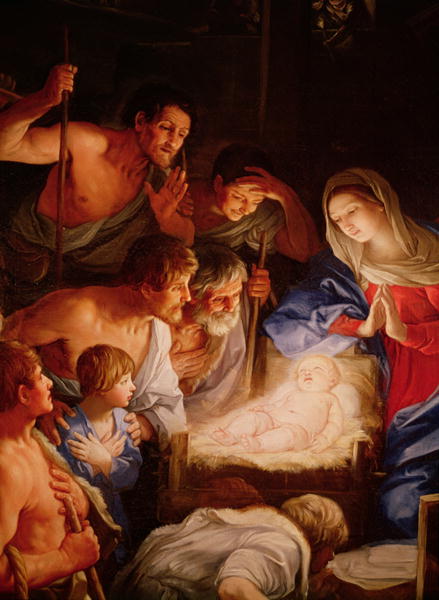
The REAL TRUTH
To most accurately determine the actual birthdate of Jesus, as what is truly revealed to us in the Holy scriptures, the best method is to work in reverse from the clues given to us surrounding the birth of John the Baptist ('Yochanan' in Hebrew), since the date of Christ's birthday is universally accepted as following John's by six months. The Holy Roman Church had placed John the Baptist's birthday using their own method, by simply calculating backwards six months from the December 25th date which they had already assigned for Christ's birthday (at "Christ-mass"). As a result, the Catholic calendar honors the "Feast of John the Baptist", on June 24, six months before Christmas. This determination however can be shown as incorrect.
Interestingly enough, the Holy Roman Catholic church also observes both the immaculate conception of Jesus (Dec. 8th) and His birth (Dec. 25th) in the same month. You would not think that this could be physically possible within the parameters of the normal human gestation period, which of course is nine months (not 12+ months nor within the same month either, accordingly).
--------------------------------------------------------------------------------------------------------------
Order of the Jewish Priestly Cycles
If we look at the written works of Titus Flavius "Josephus" (the 1st-century Romano-Jewish historian), along with other references from the Holy Scripture and the Hebrew Mishnah (Jewish commentary on the Torah), a much different conclusion becomes evident.
Zechariah ('Z'chariyahu' in Hebrew - the father of John the Baptist), was a member of the priestly division named Abiah (or Abijah) (Luke 1:5).
"There was in the days of Herod, the king of Judea, a certain priest named Zacharias, of the division of Abijah... So it was, that while he was serving as priest before God in the order of his division, according to the custom of the priesthood, his lot fell to burn incense when he went into the temple of the Lord." (Luke 1:5,8 NKJ)
There were 24 such divisions (1 Chronicles 24:7-18) which took their turn over the course of each year. This priestly cycle began on the first Sabbath (Saturday) of Nisan (the beginning of the year for the Hebrew Calendar), and each division ministered for one week in succession thereafter. Abiah was the 8th division of this cycle (1 Chronicles 24:10). The cycle of service would also be offset and temporarily delayed each year during the holy festivals surrounding Passover (Pesach), the 'Festival of Weeks' (Pentecost) or Shavuot, and the Feast of Tabernacles (Sukkōt), because all priests were required to attend the Holy Temple in Jerusalem during those times.
Therefore, if we research the Hebrew calendar during the time projected for the birth of John the Baptist, the first few weeks of the duty roster for service would place Zechariah's division (Abiah), as serving between the 9th of Sivan and the 16th of that month (which would equate toroughly the 11th of June). Thus Zechariah would have returned home on June 11th (Luke 1:23). We can then conclude that Zechariah’s wife Elizabeth ('Eli-Sheva' in Hebrew) would probably have become pregnant sometime over the course of the next month (Luke 1:24) – to make it simple for mathematics sake, let us use June 25th (Sivan 30 of the Hebrew calendar) as the benchmark date.
The Feast of Passover (Pesach) is symbolic to the Hebrew people that God would spare (or save) them from (eternal) death (Exodus 12:13). The sending of the prophet Elijah was also foretold to be a sign of this same fact, which would herald the arrival of the coming Messiah (Malachi 4:5-6). For this reason, the Hebrew priesthood likewise expected that Elijah would come at a time which corresponded with the Passover Feast. It is also a Jewish custom to put an extra cup of wine on the table at Passover, symbolic of the hope that Elijah would return and drink from it.
--------------------------------------------------------------------------------------------------------------
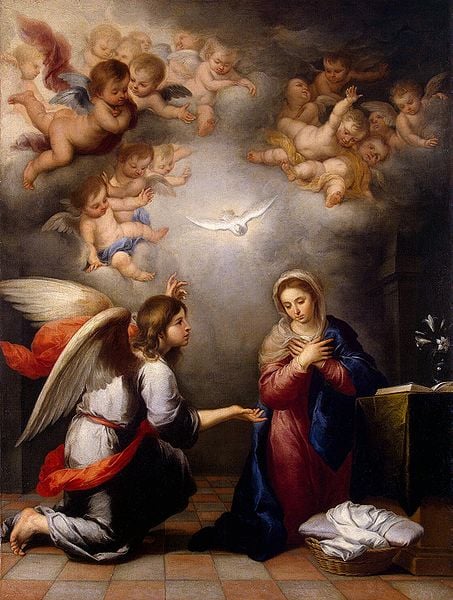
Historical Hebrew Record
We can now see from these calculations using the historical documentation and the other Hebrew records, that with Elizabeth (the mother of John the Baptist) becoming pregnant in June, and by adding nine months to this date, we arrive at March 25th (Passover occurring in the Hebrew month of Nisan or March on our modern calendar). We can also see that it is very likely that John the Baptist was actually born in March, who is identified with Elijah (Matthew 11:14) for the purpose of heralding the coming Messiah (Jesus) as the "voice in the wilderness" (Isaiah 40:3; Matthew 3:3; Mark 1:3; Luke 3:4; John 1:19-23).
It is also commonly held that Elizabeth and the Virgin Mary were related, although there is some debate as to the nature of their kinship as "cousins" (Luke 1:36 KJV). It was during Elizabeth's sixth month of pregnancy, that the angel Gabriel then made his announcement to Mary ('Miriam' in Hebrew) that she would likewise conceive a child (Luke 1:26, 36). We also read, "you shall conceive" (Luke 1:31), indicating this is a time in the very near future. It was not long after this that Mary had come to visit Elizabeth. She had left her home after being ostracized (and almost stoned to death) by the people of her own community for claiming to be pregnant with the "Messiah" (and for not yet having married her beloved Joseph). In the Holy Scripture we read that, upon hearing Mary's voice, the baby in Elizabeth's womb "leaped for joy" (Luke 1:44). It is recorded that Mary stayed with Elizabeth for the next few months, then returning to Joseph in time for the final stages of her own pregnancy.
If we now understand that John was born in March, then Elizabeth would have been in her six month of pregnancy during the month of December (on or about the 25th using our math example), thus the time of Mary's "Immaculate Conception" (six months after John's conception in June). If we count to the ninth month forward from there, we arrive at a time in September, somewhere between the Feast of Trumpets (Rosh Hashanah) - which also heralds the coming of the Messiah, and the Feast of Tabernacles (Sukkōt) - which prophetically reflects the Lord's coming Kingdom of Heaven on Earth ('Immanuel' or "God with us"). The Holy Scriptures and the festivals that the Lord ordained for His original people to observe, not only reflect this but were done so for a reason, as God's perfect plan for us is always done with His careful intent and purpose.
It is also understood by Jewish historians, that the census being performed by the Romans was conducted around the time of the Hebrew fall festivals (Trumpets, Atonement and Tabernacles -or- Rosh Hashanah, Yom Kippur and Sukkōt, respectively). This was because of the semi-annual pilgrimage to Jerusalem that was observed by many of the Jews during these fall festivals. The Romans determined that it would be easier to account for the Hebrew people accordingly when they had gathered in large assembly. Thus the reason for Joseph to likewise be travelling to Bethlehem (his hometown for the "House of David"), so that he and his family might also be counted for the census. This hypothesis is also given as one reason why the inns and boarding houses in the area may have already been full at the time of year when Joseph and Mary arrived, therefore forcing the family to seek lodging in a stable or "manger" (Luke 2:7,12,16). The sheer numbers of people making this pilgrimage would have easily overloaded all of the regular establishments, in and outside of the city of Jerusalem (the small town of Bethlehem also being within close proximity). This again would indicate that Mary became pregnant some time during the month of December, for her to arrive in Bethlehem some nine months later (September), in time for the birth of Jesus.
--------------------------------------------------------------------------------------------------------------
Why the Biblical Feasts and Festivals?
A September birth for the Lord Jesus Christ also more closely fits into God's plan and purpose as is prophetically revealed in the biblical fall festivals. With the 'Feast of Trumpets' (Rosh Hashanah), it is symbolic of heralding the coming of the Messiah (both the first time, as well as His "second coming"). The 'Feast of Tabernacles' (Sukkōt), likewise prophetically relates to when the Lord 'Immanuel' ("God with us") will "tabernacle" and live with us here on the Earth. (*SEE Our Article: The FALL FESTIVALS of the Lord - The Feast of Trumpets (Rosh HaShanah) - Atonement (Yom Kippur) and Tabernacles (Sukkōt) - for more info on these Biblical Festivals).
Additionally, the 'Feast of Tabernacles', is one of the festivals that were required by the Hebrew faith as one of the designated semi-annual pilgrimages to Jerusalem. It was very important for every Jewish male, to make their offering and sacrifice at the Holy Temple during this time. This would set precedent for the blessings they could potentially receive from the Lord in coming year, so everyone therefore observed this most sacred practice. Therefore the relation to the Roman census and heavy crowds present in Jerusalem would also apply.
Both of these feasts typically fall within the timeframe of mid-September to mid-October, depending on how the lunar cycle correlates with the Hebrew calendar (the Hebrew month of 'Tishri' overlaps both months on the Gregorian calendar). For example, in 2011, Rosh Hashanah was on September 28-30; for 2012, it will be September 16-18. Sukkōt was observed in 2011 on October 12-19; in 2012 however, it will be between September 30 and October 7. During the time of Jesus, both of these feasts would have most likely fallen during the month of September if we relate them to the indications mentioned above. Likewise, many Hebrew families would also come to Jerusalem early, in time to celebrate all three fall festivals, since they literally ran back-to-back. Therefore the projected association with both festivals could work.
The Hebrew people could see this prophetic connection, although they simply did not acknowledge Jesus as the actual person of the Messiah that they were watching for (as they are still waiting for His arrival, which will be with Christ's "second coming" instead).
These things can therefore reveal to us that the evidence for the birth of Jesus more correctly points to September and that the date in December, is more accurately the time of His immaculate conception.Also to point out, is that this likewise does not upset the balance of the Christian observance, as Jesus was still "born in the womb" (as in the 'Annunciation') reflected at the time that has been designated in December. Additionally, if we hold the current argument versus abortion as evident, which states that at "conception" a life is thus "born", then the above interpretation is also true. Jesus would have been "born", as conceived in December, then physically birthed into the world in the month of September. So therefore, both variations of the actual birthdate of Christ are true!
--------------------------------------------------------------------------------------------------------------
SEE our other article on this topic: "Evidence for the STAR of BETHLEHEM in the HEAVENS" for more detailed facts on the modern-day scientific discoveries that give evident proof for this miraculous event.
Also CHECK OUT: "The STAR of BETHLEHEM in Bible Prophecy" for more specific information on this prophetic event in biblical history.
--------------------------------------------------------------------------------------------
When was JESUS Actually Born? - The STAR of BETHLEHEM in Bible Prophecy - The Astronomy and Astrology of the "Wise Men"
--------------------------------------------------------------------------------------------
What Would Be the Best Way to Observe this Holiday Season?
It is not our place to enforce what date is observed for this sacred holiday season, nor recommend what people should individually practice in observance of their faith. That is solely between them and the Lord God as our creator.
Based on all the above revelations, the theories presented in this article do seem to make a "better fit" along with the traditional documentation in the Holy Scriptures. It places Christ's 'annunciation' and immaculate conception (His "birth in the womb") as occurring in December, with John the Baptist's birth in the Spring during Passover, as the "new Elijah" to herald the coming Messiah, and then Christ's physical birth into the world in the Fall season (September).
One method we could use to celebrate these sacred events, would be to observe the Immaculate Conception and birthday of Jesus, along with the announcement or 'annunciation' of His arrival, in December-January, which corresponds with the traditional Christian holidays. Then, to also acknowledge the physical birth of Christ and celebrate it in September along with 'Feast of Trumpets' and 'Feast of Tabernacles', as heralding both His original earthly birthdate, as well as His glorified second coming to establish His Kingdom of Heaven on Earth. This would fit the scenario and facts presented here more closely. It also does not create havoc in the balance of all the truths.
The purpose of all this is not to create an endless series of debates over the topic or incite riots within the organization of the church as a whole. It is actually quite the opposite. These topics are presented for us to explore our real history and attempt to better understand what is written and taught about our Lord God, so that we can seek Him more completely and improve upon our relationship with Him.
Either way (all theological or historical speculation aside), isn't it all about celebrating the birth and arrival of Christ Jesus, as the "anointed one" and prophesied Messiah? The study of this information may be interesting, but it is not as important to determine exactly WHEN He came on a specific calendar date, for we celebrate the fact that HE DID COME... That He IS RISEN and alive! and will COME AGAIN, as the Lord has promised to us all. Therein is real truth in the "blessed hope" of Christ Jesus, as it is by faith alone that WE are SAVED! -AMEN
A final note, is that it is also interesting with the increases in modern science and the knowledge gained about our collective history as a result, that more information is being discovered to substantiate what the rest of us already hold as truths by our faith. It does tell us in the Holy Scriptures that in these "latter days" - "knowledge will be increased" (Daniel 12:4). So thus these new revelations in the historical aspects of our beliefs, may become the proof positive for those who would not otherwise believe in Jesus Christ as the Lord God, or as being one and the same with the Jewish Messiah, just by faith in itself.
Let's get as many people into the Lord's glorious Kingdom as possible, through whatever truthful and legitimate methods become available to us today. Be blessed always in His peace my friends!
--------------------------------------------------------------------------------------------
The KINGDOM COMES!
THIS IS THE MOST IMPORTANT ASPECT OF ALL THE PROPHETIC WRITINGS IN THE HOLY SCRIPTURES
The words of prophecy are really a harbinger of hope to those who are searching for God today. It is through our belief that Christ died for our sins (John 3:16) and faith in His second coming (1 Thessalonians 4:14-18), that we are all "saved" and will enter into the coming Kingdom of Heaven along with Him.
"For the grace of God has appeared that offers SALVATION TO ALL PEOPLE. It teaches us to say ‘No’; to ungodliness and worldly passions, and to live self-controlled, upright and godly lives in this present age, while we wait for the blessed hope – the appearing of the glory of our great God and Savior, Jesus Christ." (Titus 2:11–13 NIV)
JESUS is the LORD and MESSIAH, who came into the world as God's plan of salvation for us all. Christ was born as a human child, He lived and performed His ministry as a prophet and man, He was crucified and shed His divine blood as the "Lamb of God" for the remission of our sins, He was resurrected in full glory to pave the way for our entrance into the Heavenly Kingdom, He ascended into Heaven to rejoin our Lord Father, and HE WILL return soon in the very near future, to establish His Kingdom here on Earth and live with us as "Emmanuel", the "Lion of the tribe of Judah" and King of Kings for all eternity.
"He who testifies to these things says, ‘Surely I am coming quickly.’ Amen. Even so, come, Lord Jesus! The grace of our Lord Jesus Christ be with you all. Amen." (Revelation 22:20-21)
--------------------------------------------------------------------------------------------------------------
May the Peace of the LORD Always be with YOU!
--------------------------------------------------------------------------------------------
References and Related Articles
- The STAR OF BETHLEHEM in Bible Prophecy
SEE OUR ARTICLE on how the "Star of Bethlehem', the legendary phenomena associated with the birth of Baby Jesus as the prophesied Messiah for the children of Israel, ties in with Biblical Prophecy. - Evidence for the 'STAR OF BETHLEHEM' in the "HEAVENS"
SEE OUR OTHER ARTICLE on this topic for more detailed information on the scientific discoveries that give evident proof for this miraculous event. - The Witness of the Stars - by E.W. Bullinger
The contents of this wondrous book show how God has been speaking His first great prophetic promise of Genesis 3:15, as displayed in the heavens. - The Christmas Star - by John Mosley
Available at Amazon.com (Scientific & Historical books) - The Birth of Christ Recalculated - by Ernest L. Martin
Available at Amazon.com (Scientific & Historical series) - The Star that Astonished the World
(Online Version) Read about the new scientific evidence surrounding "The Star of Bethlehem" and birth of Jesus
- Associates for Scriptural Knowledge WEBSITE
Having a biblical and historical understanding of the Bible, we can all know and trust God better. The responsibility of every believer is to become better educated about what they believe with a greater comprehension of the source itself -The Bible. - The Birth of Jesus and the Day of Trumpets (Chapter 6)
This Chapter of the book 'The Star that Astonished the World', covers the significance of the 'Feast of Trumpets' (Rosh Hashanah) and its relationship with the historical birthdate of Jesus Christ. - The FALL FESTIVALS of the Lord - The Feast of Trumpets, Days of Atonement and Feast of Tabernacles
SEE OUR ARTICLE - The 'Fall Festivals of the Lord' (Trumpets - Atonement - Tabernacles) represent significant prophetic events in Biblical history surrounding the arrival of the "Messiah" and "Second Coming" of the Lord Jesus Christ. - The Bible Reveals when Jesus was Born! - by (HubAuthor) Judah's Daughter
(HubPages) The Christmas story found in the Holy Bible (Luke 2) is cherished by all Christians. The birth of our Lord and Savior, Jesus Christ is the most important event in history, next to the day of His resurrection.
--------------------------------------------------------------------------------------------

--------------------------------------------------------------------------------------------




